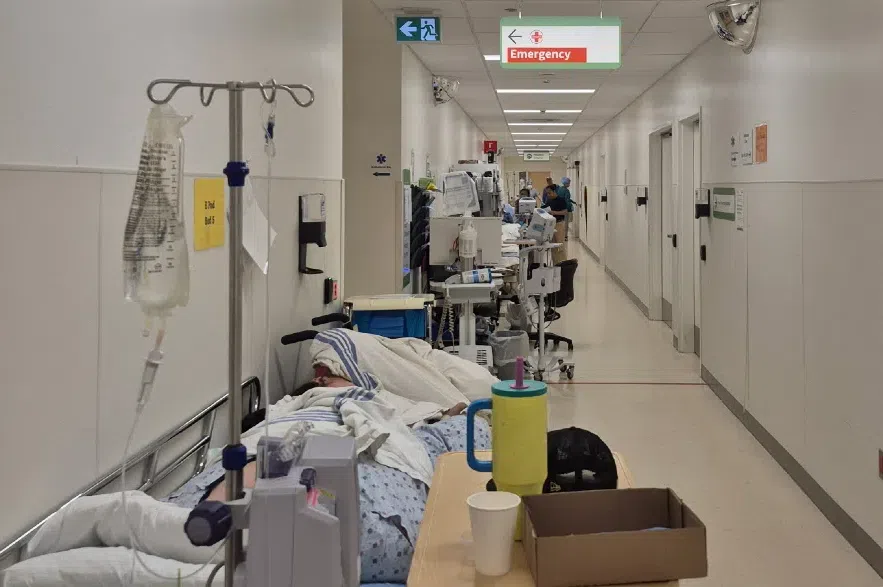Royal University Hospital’s (RUH) emergency department has more patients receiving treatment in halls than rooms.
Drayson McGilvery has been a full-time nurse in the department for two-and-a-half years. He said RUH’s emergency has capacity for about 23 people to get a bed in a room but because of overcrowding, it’s meant roughly 28 to 32 beds have been added in its hallways.
Read more:
- Health-care workers highlight ‘critical’ issues in emergency rooms across Sask.
- ‘Shocking’ number of Sask. nurses considering leaving profession: Survey
- Viral video at Saskatoon hospital reflects broader issue, nurses union says
It’s left many patients trying to recover in an “overstimulating” environment, according to McGilvery.
He said the halls are “critical transport routes,” so there’s a lot of movement in these areas as healthcare workers move past, including nurses who are navigating patients on ventilators with several IV pumps through the narrow space.
Those patients in the hallway also have to hear call bells going off at all times of the night. Their health is also at risk because of their constant exposure to the critically-ill people being transported through the hallway.
Health-care workers also face issues trying to provide confidential patient care in a public space.
“We’re giving reports at the desk. We’re talking to physicians. We’re making very important phone calls about patients’ care, about patients who are in rooms, and this hallway patient is having to listen to all this,” McGilvery said.
He said with so many people needing a spot to lay, sometimes nurses in the department have to make tough calls on who gets put in the hallway versus a room.
“You have to just go off of who’s the most stable and sometimes the most stable person is your elderly person with dementia, and that’s not a good environment for them to be in the hallway, but that’s your most stable person,” McGilvery said, adding how it’s “disheartening” to have to do that.
While most patients understand the nurses’ aren’t at fault for hallway healthcare, McGilvery said some get upset, “as they should.”
Overcapacity issues aren’t new to the department, he noted.
McGilvery said there’s been hallway beds in RUH’s emergency for more than a year now and there’s a good chance it’s impacted the health outcomes for patients.
“There is cases where there’s a lot of delay of care and there’s a lot of fixing things that could have been prevented,” he said, especially since the halls aren’t designed for patients to be in them.
Call to action
McGilvery was one of the roughly 450 health-care workers who signed a letter, addressed to Health Minister Jeremy Cockrill, outlining the issues impacting emergency care across Saskatchewan. It was posted to the Saskatchewan Union of Nurses Facebook page earlier this week.
For McGilvery, who also helped draft its contents, this letter was “a cry for help.”
He said RUH isn’t even the only hospital in Saskatoon struggling with overcrowding, with St. Paul’s also going through the exact same thing.
According to McGilvery, the letter was intended to be a call for collaboration to make plans for alleviating the mounting pressures on emergency departments.
He said some of these pressures could be eased by improving access to primary and long-term care, which would keep more people out of the hospital and its hallways.











